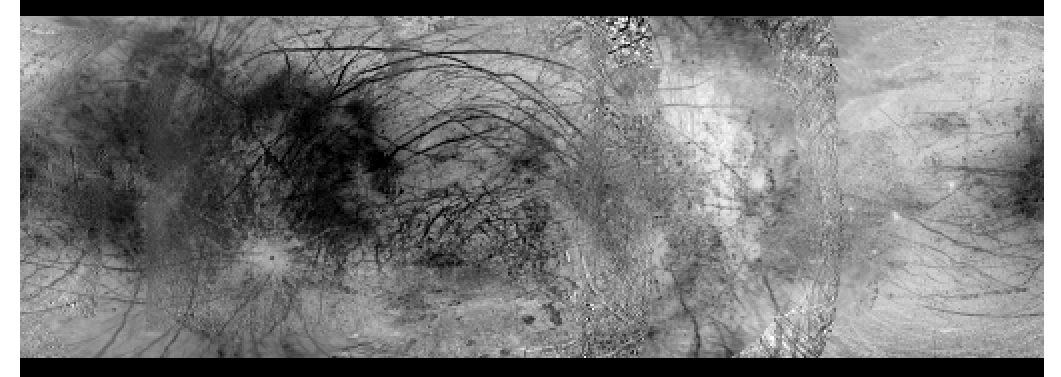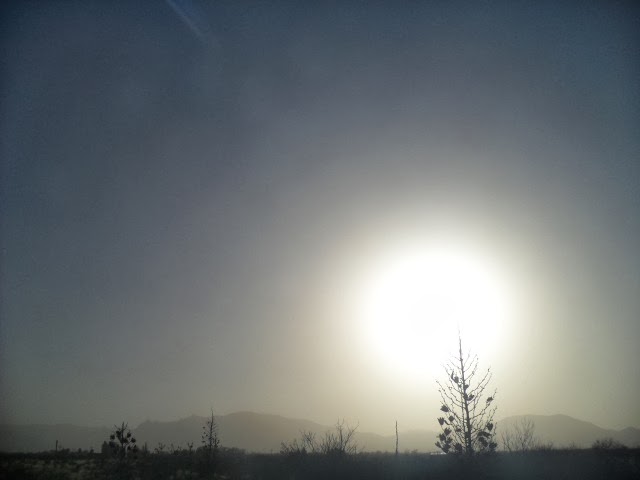Already I'm beginning to feel the data crunch and this project has hardly even started! So I continue to think about and plan how I'm going to handle what will be a huge amount of data coming in. This leads me to the concept of "Pipeline Processing" which these days isn't so much of an unknown term.
Pipeline Processing
The basic idea is that on one end of the pipeline you have raw and calibration data coming in , and then other end of the pipeline you have "data products" coming out. In between you have a number of steps to produce these data products, with various probes stuck in at various places to obtain what I call "telemetry data" -- which are actually just additional data products.
One thing for sure that I need to integrate into this project as soon as I can is a database. Not only is this an excellent way to store telemetry data, it can also store the final data products. The best thing about databases, though, is their ability to be searched. A well written database query is like a beautiful song.
One other cool thing about pipeline processing is that it's modular. So I can design a pipeline now and later on I can add to it or take things away.
Pipelines are also semi-automatic. Well-designed pipelines will alert me to any kinds of problems with the incoming data so I can more carefully (manually) look at them. But overall it's automatic and therefore can push through a lot of raw data very quickly. This allows me to devote most of my time and energy to the analysis of the data products rather than the processing and reduction.
Anyhow, so that's on the near horizon.
PSF Fitting
I didn't let the cloud problem with the 19 Feb 2014 data set go. I wanted to see if there was anything I could do to "improve" the results. In this case, and improvement would show more consistent photometry.
My preliminary work with this looking at one set of data taken that evening shows that there is a slight improvement in consistency. Enough so that I should probably take even a harder look at things and see if I can improve upon what I've already done.
Here's what I did: I started with a calibrated image. I then manually created four
gaussian images to do sort of a "best fit" to four different regions (the PSF "wings") of this raw calibrated image. Next I combined these four gaussians into a single master gaussian image. Last, I subtracted the gaussian image from the raw image. Here's what I got:
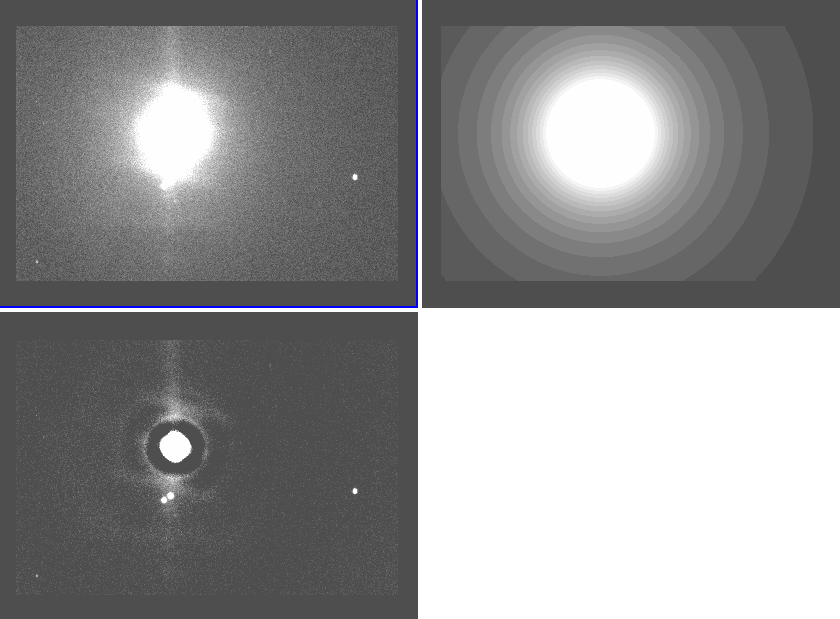 |
| Figure 1: Gaussian subtraction |
The upper left is the raw image. Upper right is the gaussian. Lower left is the difference between the two.
As you can see, except for the central peak (which I don't care about much -- see below) and some remnants (which are still fairly significant and not modeled well in my manual attempt), the big blob of Jupiter is all but cancelled out. In the upper left image, if you didn't know they were there Ganymede and Europa aren't visible. In the lower left, however, they are very clearly there.
The peak values of the three satellite targets in the raw image match the subtracted image to within 1%, so I'm confident that the subtraction went ok.
However, a better model wouldn't create so many subtraction artifacts (like those rings around Jupiter). So what to do?
Well, there's another "trick" I learned a very long time ago called "Shift and Add" (SAA). This is where you find the peak value of an image or subarray, and shift the entire image such that the peak value lands in the middle of the resulting image. Doing this for multiple images and adding them together results in a PSF that is the average of all the images.
Shift and Add is done in
speckle interferometry, which is where I learned it.
Applying this technique to a number of raw images, I get this:
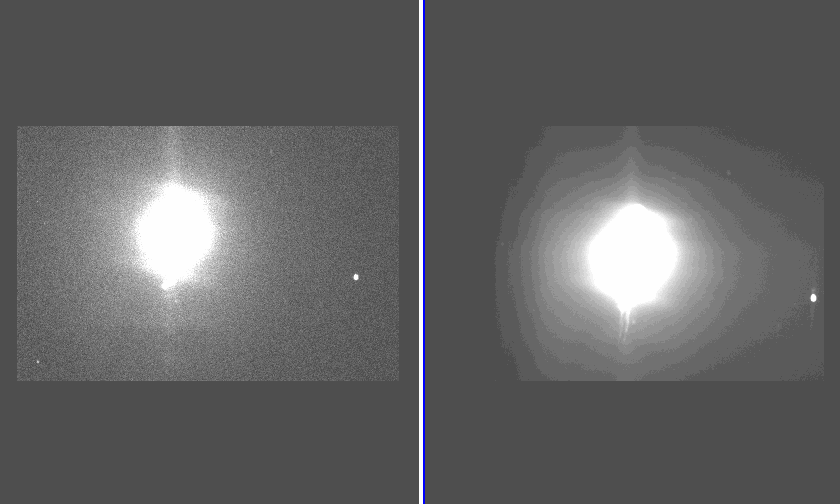 |
| Figure 2: Shift and Add technique |
The image on the left is a single image example. The image on the right is a number of images combined using the SAA technique.
SAA actually does a very good job re-creating the actual PSF, but it has a number of drawbacks. First and foremost, if there are any other objects in the field of view, it will preserve them (as you can see in the right-hand image, the background star is still there).
Also, depending on the input data, a number of artifacts can be introduced. Below is the same SAA image, but rescaled to show details closer in to Jupiter:
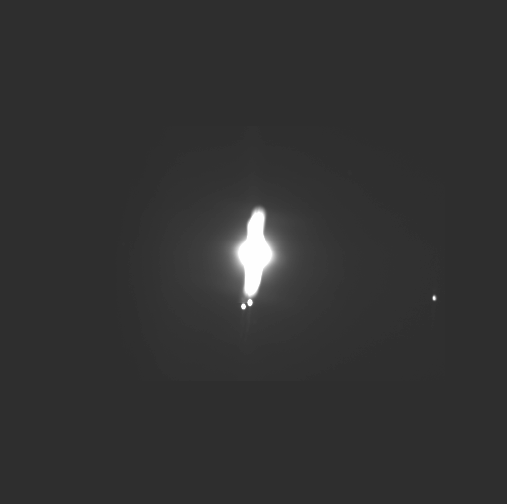 |
| Figure 3: SAA image, rescaled to show inner structures |
If I were doing speckle imaging of Ganymede and Europa for astrometric purposes, I'd actually be pretty thrilled with this result. However, if I were to use this image as my PSF model for photometry, I'd be screwed.
I'm actually not quite sure what to make of this image -- especially that strange curvy artifact in the center. I'll have to look closer at the data that went into creating this SAA image to understand what's going on there. Alas, more work!
So the conclusion that I've sofar come to is that I need to create a rock-solid gaussian model to subtract from the raw calibrated images in order to get uncontaminated (or at least minimally contaminated) photometry of the Galilean satellites as they get close to Jupiter.
This will
not help when there are clouds. The above example is what I'd call an extreme case just to make it easier for me to learn a technique for modeling the data.
Alas, when I look at the photometry using the gaussian-subtracted raw data, I don't see much of a difference. I'm still looking at this but maybe it isn't worth the effort based on the fact that I was looking through a layer of clouds. It isn't a realistic test of the gaussian function subtraction technique. I'll have to use better data (which I think I have from the other night) to create a gaussian model and then see how the photometry looks.
Close To Jupiter
The four Galilean satellites orbit Jupiter in almost exactly the same plane as our line of sight. So as they move, they get close to Jupiter and either transit Jupiter or are eclipsed by Jupiter, and then they move further away. Round and round they go.
I did a calculation to determine the best I can expect from a worse-case scenario. The light from Jupiter is going to effect the photometry of the moons. That's a fact. Even with the best system in the world, this will be the case. The effect from Jupiter gets worse the closer you get to it. Since all of the satellites will get very close to Jupiter, I need to come up with a way to deal with this problem. But how much of a problem is it?
The question is, with the optical system that I have how far away does each moon get from Jupiter? The worse case is when the Jupiter system is furthest away from Earth. That happens at superior conjunction (SC) when Jupiter is at the aphelion in its orbit around the sun. Of course at SC the sun is in the way which IS the worst-case scenario! But as an estimate I can say that this is pretty much the same as being one month before or after SC.
At that time, Jupiter is about 966,118,682 km away from earth.
The orbital radii of the moons are:
- Io: 421,700 km
- Europa: 671,034 km
- Ganymede: 1,070,412 km
- Callisto: 1,882,709 km
So that translates to a maximum separation of:
- Io: 90 arcsec
- Europa: 143 arcsec
- Ganymede: 229 arcsec
- Callisto: 402 arcsec
For my optical system (2.683 arcsec / pixel), these values translate to:
- Io: 34 pixels
- Europa: 53 pixels
- Ganymede: 85 pixels
- Callisto: 150 pixels
So what this means is that at SC, Io (for example) will be 33 pixels away from Jupiter
at it's furthest.
That's really really close and it's obvious from the data I've taken that it's gonna be really hard to get good photometry that close in. I'm going to have to rely on the stable atmosphere (clear skies!) to help me with that.
In my images, Jupiter is saturating the CCD. Under the best conditions I've seen sofar, the radius of that saturation is about 10 pixels. So I'm going to guess that no photometry within 20 pixels is going to be of any value.
Io, at worst, is going to be 33 pixels away at maximum elongation. So at least I'll have a chance.
I guess I should also mention that at best (Jupiter opposition) when Jupiter is closest to Earth, those maximum distances are a bit more tolerable:
- Io: 130 arcsec (48 pixels)
- Europa: 207 arcsec (77 pixels)
- Ganymede: 331 arcsec (123 pixels)
- Callisto: 582 arcsec (217 pixels)
So good modeling and subtraction of at least the wings of the Jupiter PSF is going to be required to get any decent photometry out of these targets (more so for Io, less so for Callisto).
Well, I think that's all for now. I'm tired of writing and I'm anxious to start looking at the data I took the other night.
Two other major tasks to complete:
- Database
- Sub-pixel circular photometry
- Mode calculation for sky subtraction
======= UPDATE ======
Very preliminary results from 27 Feb 2014 data looks really nice and consistent. I'll have more info once I get the database stuff running and I can do proper statistics on the photometry.













